
Thoracica is an infraclass of crustaceans which contains the most familiar species of barnacles found on rocky coasts, such as Semibalanus balanoides and Chthamalus stellatus. They have six well-developed limbs, and may be either stalked or sessile. The carapace is heavily calcified. The group includes free-living and commensal species.

Thecostraca is a class of marine invertebrates containing over 2,200 described species. Many species have planktonic larvae which become sessile or parasitic as adults.

Eupterotidae is a family of insects in the order Lepidoptera with more than 300 described species.

Lamiinae, commonly called flat-faced longhorns, are a subfamily of the longhorn beetle family (Cerambycidae). The subfamily includes over 750 genera, rivaled in diversity within the family only by the subfamily Cerambycinae.

The Balanomorpha are an order of barnacles, containing familiar acorn barnacles of the seashore. The order contains these families:

Whale barnacles are species of acorn barnacle that belong to the family Coronulidae. They typically attach to baleen whales, and sometimes settle on toothed whales. The whale barnacles diverged from the turtle barnacles about three million years ago.
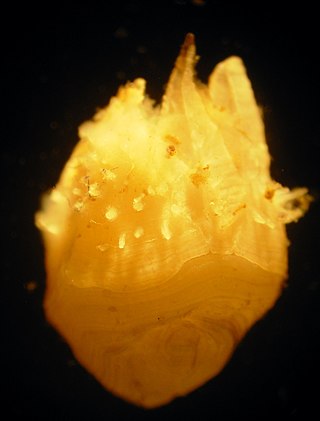
Acasta is a genus of barnacles in the family Balanidae, containing the following species:
Calantica is a genus of barnacles in the family Calanticidae, containing the following species:
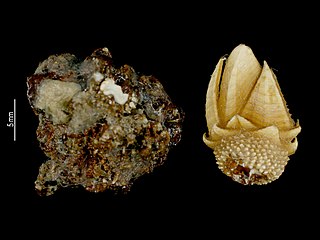
Calanticidae is a family of acorn barnacles in the order Calanticomorpha. There are about 12 genera and more than 60 described species in Calanticidae.

The Chthamaloidea are a subdivision of Balanomorpha proposed by Newman and Ross to include barnacles with shell wall composed of rostrum, carina, and one to three pairs of latera, rarely supplemented with one or more whorls of basal imbricating plates. The rostrolatus enters the sheath, but rarely fuses with the rostrum, as in the three higher superfamilies. Shell plates are simple in construction, solid, and incorporate organic chitin between carbonate layers. Opercular plates are deeply interlocked, and in some genera, may become concrescent with age. Soft part morphology includes concave labrum without notch in the central part. Cirrus III more resembles Cirrus IV than II, or may be intermediate in structure. Caudal appendages present in some species.
The Catophragmidae are a family of barnacles in the superfamily Chthamaloidea with eight shell wall plates, surrounded by several whorls of imbricating plates. The basis is membranous.
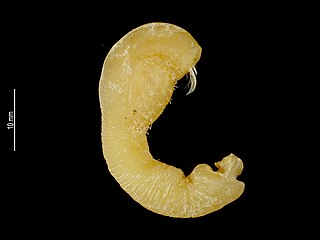
Heteralepas is a genus of goose barnacles in the family Heteralepadidae. which was first described in 1907 by Henry Augustus Pilsbry.
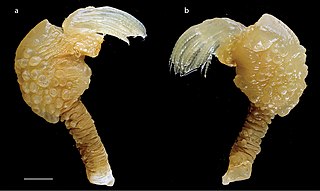
Paralepas is a genus of goose barnacles in the family Heteralepadidae.
In the past, Apygophora has been considered an order of barnacles. Research published in 2021 by Chan et al. resulted in the orders Apygophora and Pygophora being classified as families under the order Lithoglyptida.
In the past, Pygophora has been considered an order of barnacles. Research published in 2021 by Chan et al. resulted in the orders Pygophora and Apygophora being classified as families under the order Lithoglyptida.
Lithoglyptidae is a family of barnacles in the order Lithoglyptida. There are about 7 genera and more than 40 described species in Lithoglyptidae.
Iblomorpha is a small order of barnacles in the class Thecostraca. There are only two families and about eight described species in Iblomorpha. In this group we find barnacles that use calcium phosphate in their shell, and species that protect themselves against predators with poison.

Calanticomorpha is an order of acorn barnacles in the class Thecostraca. There are 3 families and more than 90 described species in Calanticomorpha.
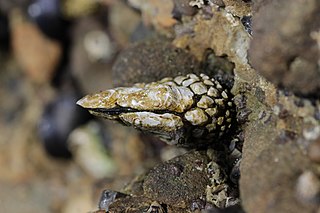
Pollicipedomorpha is an order of pedunculated barnacles in the class Thecostraca. There are 3 families and more than 30 described species in Pollicipedomorpha.











